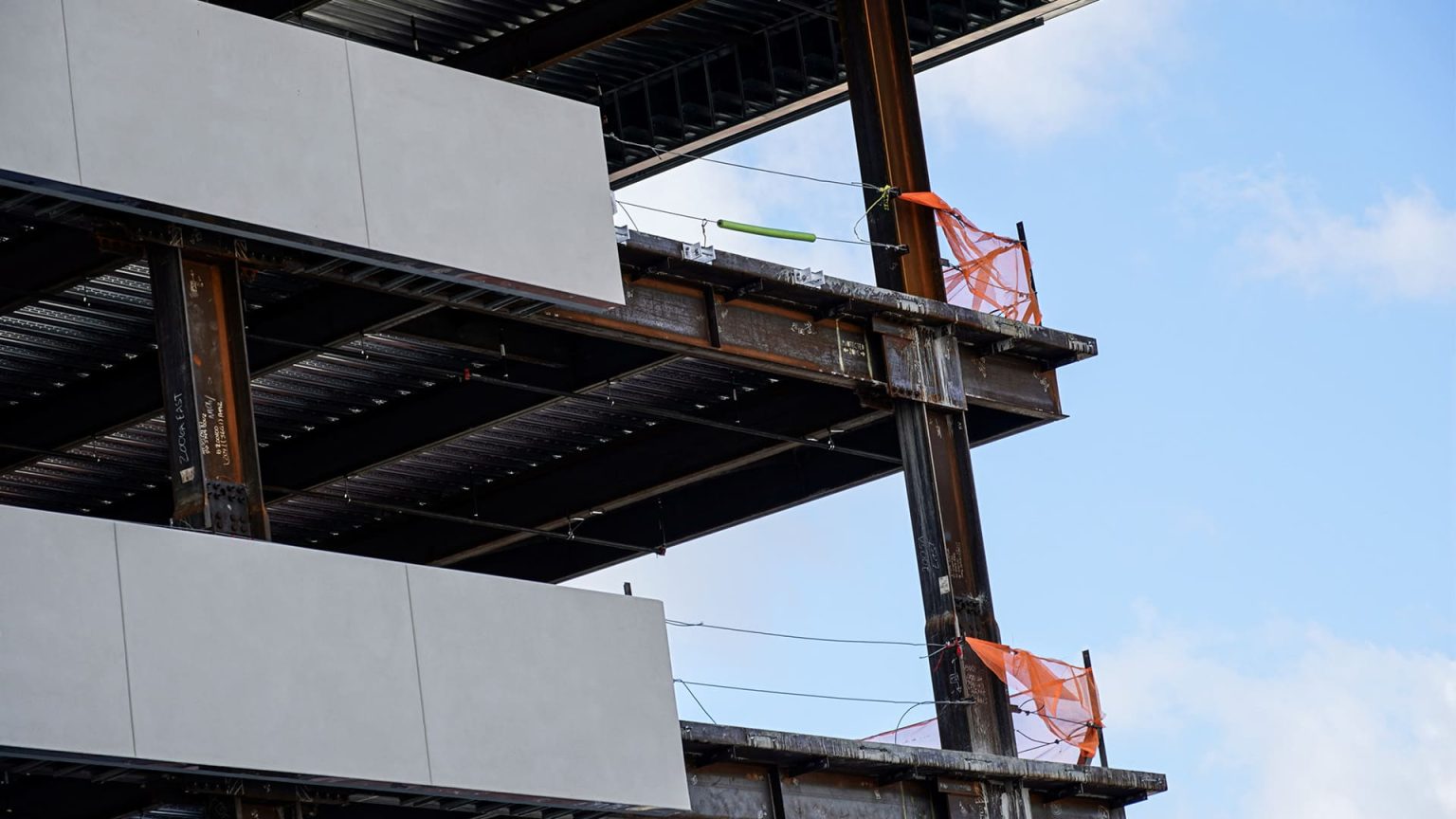

At Anning-Johnson, we are well-equipped to provide prefabricated walls & ceilings for commercial construction projects. Our highly specialized Preconstruction and BIM teams thoroughly review drawings to determine if prefabrication is the best method for your particular project. Our teams also provide accurate bids and proactively resolve design challenges before they cause costly problems or schedule delays. We combine best practices and lessons from job sites nationwide to better serve our customers.
The prefabrication process begins with the design phase. Our team uses in-house Building Information Modeling (BIM) software to design prebuilt building components that meet exact specifications for prefabricated commercial buildings. Once the design is complete, the components are often built off-site ensuring consistent quality, efficiency and reduced waste.
The building process involves cutting, drilling, and welding the components to exact specifications. The components are then transported to the commercial construction site, assembled, and installed in the final structure using modular construction techniques. The erection process can be much faster than traditional construction methods since the components are already assembled and ready to be installed.


Speed:
Prefabrication allows buildings to be constructed much faster than traditional methods. Since the components are assembled off-site, weather conditions or other delays can often be avoided during the construction process.
Savings:
Because the building process is typically more efficient, a project using prefabrication methods can often result in schedule and/or overall project cost savings.
Quality:
Prefabrication often involves preassembling building panels and flying them into place via a crane or lift, which ensures consistent quality. The components are manufactured to exact specifications and are inspected at every stage of the process.
Sustainability:
Prefabricated commercial buildings are often more sustainable than traditional buildings. The manufacturing process generates less waste and uses fewer resources than traditional construction methods.
Safety:
Prefabrication can reduce traffic on a jobsite and can also reduce the risks of working at high elevations.
We have a proven track record of handling the most complicated and schedule-sensitive commercial construction projects that require prefabricated building components.

